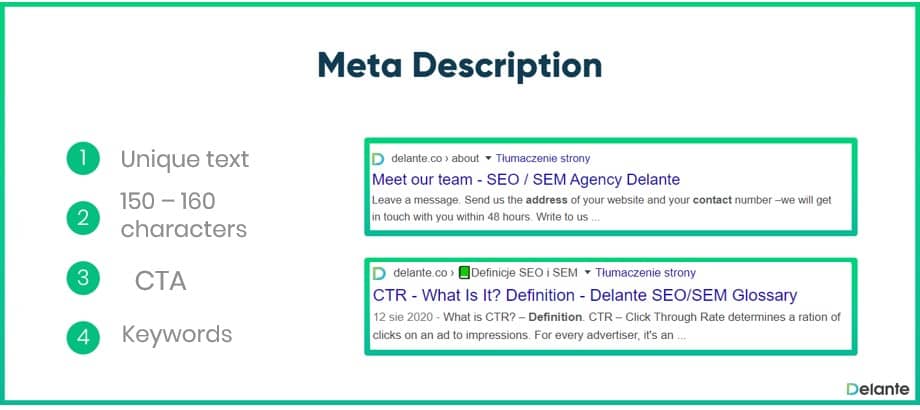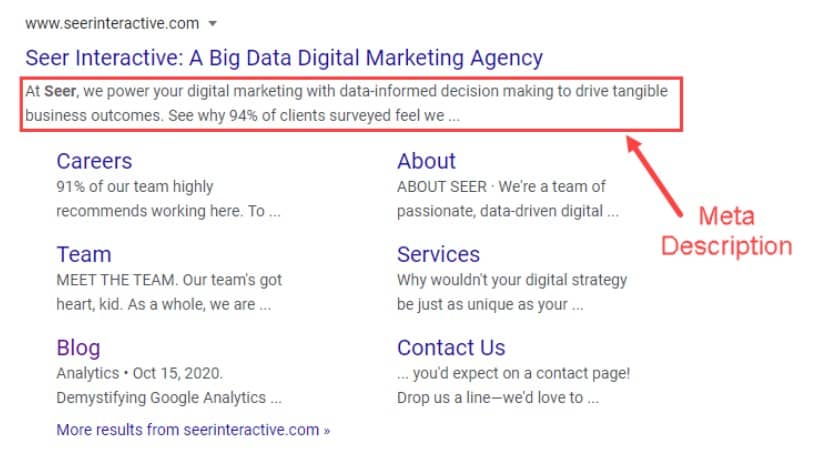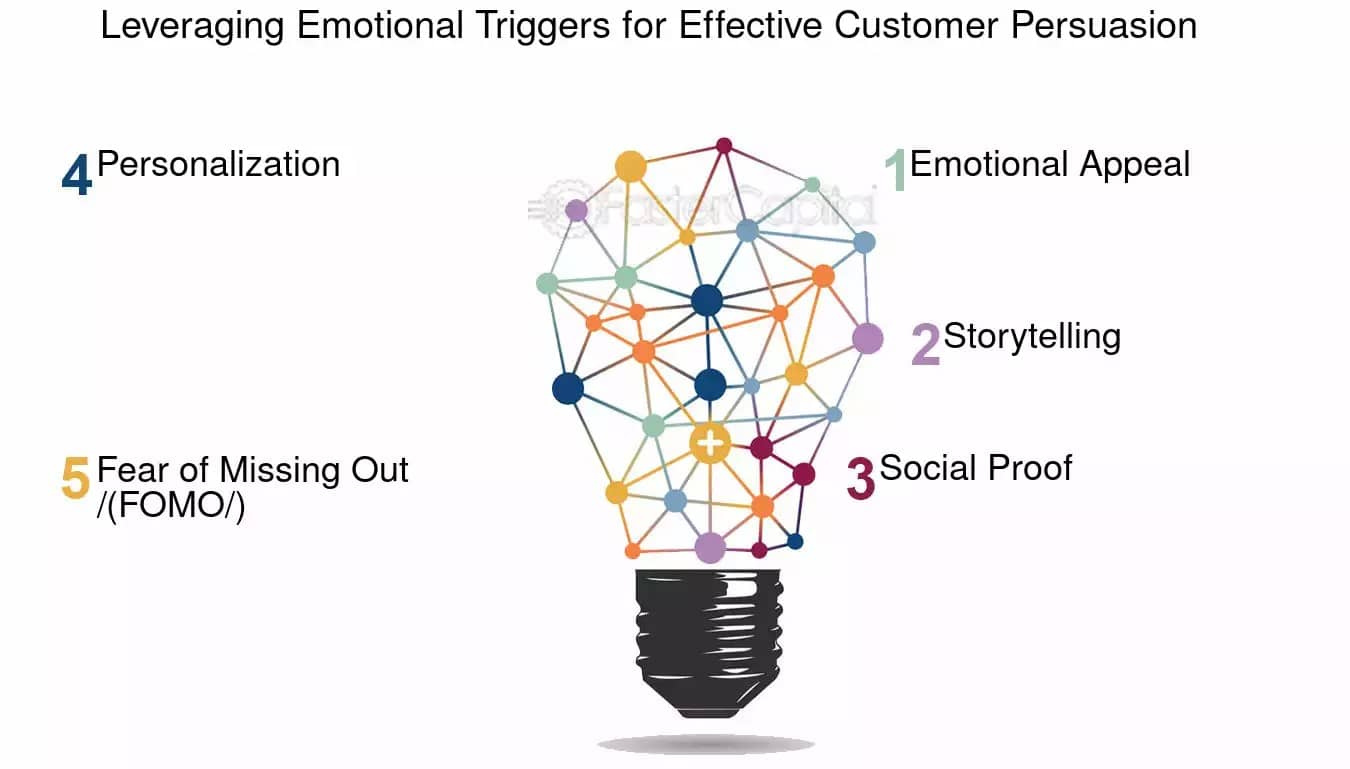Last Updated on April 13, 2025 by Admin
Today, Search engine optimization (SEO) has become a fiercely competitive game where every aspect, including crafting an optimized meta description, is overlooked. Meta descriptions may not directly impact rankings, but they can have a great impact on click-through rates (CTR) and help users make a first impression of SERPs.
In reality, meta descriptions, which are below the page’s title and URL, help persuade users to visit your website by giving a short description of the content.
Since a well-written meta description can bring traffic, we need to understand how to write one that will engage the user. In this guide, we’ll look at what meta descriptions are, why they’re important, and how to write them to help improve your website’s visibility and SEO performance.
What is a Meta Description?
A meta description is a brief HTML element that explains the content of a page in brief. Typically, this summary shows up in search results right under the title and URL of the page so that users know what the page is about. Search engines typically limit meta descriptions to 160 characters, although this is the maximum length allowed.

Meta descriptions aren’t directly associated with Google rankings but are an excellent way to amplify CTR. The more likely users are to click on your page, the better the description. Aside from showing up in search results, meta descriptions show when people share links on social media networks, making them a double-edged sword for you to drive traffic through various sources.
Why is Meta Description Important for SEO?
While meta descriptions are not direct ranking factors, they play an important role in your website’s SEO performance and user engagement. A good meta description is a mini ad for your content in search results.
Key benefits include:
- Compelling descriptions result in increased Click-Through Rates (CTR), increasing your chances of being chosen by a user over another result.
- Clear descriptions help users to understand what to expect from your page.
- Clean, consistent, and well-written descriptions improve your brand’s presence in search results.
- Meta descriptions are often displayed when content is shared on social media.
- Search engines signal that your content is relevant and useful with higher CTR.
How to Write an SEO Meta Description (Best Practices)
To write effective meta descriptions, you need a strategic approach to meet user intent, satisfy search engines’ requirements, and remain in line with marketing best practices. Here are the essential guidelines for writing meta descriptions that drive clicks:
1. Keep It Concise, Yet Informative (120-160 Characters)
The meta description length is critical. On desktops, Google usually shows 120 – 160 characters of the description in search results, while mobile search results may truncate the description down to about 105 characters. It’s important to keep your meta description below this range to avoid truncation, which can result in an incomplete or misleading snippet.

Why does this matter? As an SEO, you know users scan SERPs quickly for the most relevant information. If your meta description gets truncated, essential details or calls to action may be cut off, leaving users unsure whether to click. To avoid this, include vital points early, ideally within the first 100 characters.
2. Use Target Keywords Naturally
Though meta descriptions don’t directly affect Google’s ranking algorithm, they are still important as a way to engage users. Including target keywords in the meta description is important for two reasons:
- It tells the users that your content is relevant to their query.
- The SERP snippet will also highlight keywords from the user’s search query in bold so your result will stick out.
However, the most important thing is to use keywords naturally in the description. When you keyword stuff your descriptions, they can be awkward and unreadable, and users may not click. The reason for using keywords is to make them seem organic and use them in a way that makes it easy for users to understand what your content offers.
3. Align Meta Descriptions with Search Intent
A meta description is a cornerstone of SEO, and understanding and catering to search intent are essential parts of SEO. Behind each search query, there’s an intent — users might want answers, info, or products. A well-written meta description should also describe the search query’s intent to meet the user’s needs.
To write meta descriptions that align with search intent, ask yourself:
- What does the user really want to find?
- What is the user looking for? Are they making a purchase or looking for a particular service?
- When clicking this link, what are the user’s expectations?
If you can answer these questions, you will be able to create descriptions that resonate with users and meet their needs. In other words, if users are searching to purchase a product, your meta description tells them what product they want to buy and highlights features or special offers that will make them click.
4. Add a Call to Action (CTA)
Getting users to take action is crucial in increasing CTR. A well-placed call to action (CTA) tells the user what to do next, whether reading more, shopping, or signing up. Action words like “Discover,” “Learn,” “Shop,” or “Get Started” will get the users to click on your link instead.
5. Leverage Emotional Triggers
Users are more likely to click on your link when your emotional language is powerful. Bringing in words full of curiosity, excitement, or a sense of urgency helps to make it more compelling and persuasive. Emotional triggers are very effective in competitive SERPs, where many pages have similar content. If a well-crafted description can make you appeal to the user’s emotions, you will have the edge.

- Scarcity words such as “exclusive,” “limited time offer,” or “must-have” can lead users to click and buy within that scarcity.
- Instead, you can use language like “effortless,” “proven,” and “guaranteed” to show the user that your content provides precisely what they’re looking for.
Best Practice: Don’t use them without planning and ensuring they don’t undermine the message of your page. Using emotional language or making exaggerated claims too often can kill it and disappoint users, plus a high bounce rate.
6. Make It Unique for Each Page
Meta descriptions that are duplicated on multiple pages can confuse users and search engines. Your meta descriptions should change for each page on your website to accurately describe the content of that page. Duplicate meta descriptions hurt your chances of being noticed in SERPS, and you will likely have Google rewrite your descriptions, which could be less optimized or more boring than you’d like.
If you have a large website, creating a unique meta description for each page may seem daunting. However, it is important to focus on the most important pages, such as traffic landing pages, product pages, and blog posts. These pages, along with a well-written meta description, have the most potential impact on CTR and engagement.
Best Practice: Focus on creating unique descriptions for your home page, key product page, and the best traffic-generating pieces of content.
7. Match the Content of the Page
A good meta description accurately represents the content of the page. Users will immediately leave your site if they click on your link and don’t find the content they were promised in the meta description. In the long run, this is terrible news for your SEO because it raises your bounce rate.
Additionally, descriptions that do not meet users’ expectations can undermine trust and decrease the chances of users coming back to your site. Of course, the best way to avoid this is to ensure that your meta description accurately reflects the page’s content and answers the user’s needs or queries.
8. Structured Data to Improve Snippet Appearance
Structured data doesn’t directly affect the meta description, but it does help improve the appearance of your snippets with things like ratings, prices, or breadcrumbs. But this can help you make your result stand out in the SERP and increase your chances of getting clicked.

9. Monitor and test Meta Descriptions
That means you must test a few meta description versions to see which works best. To do this, you can rely on tools like Google Search Console to find which descriptions bring in the most CTR so you can improve accordingly.
Conclusion
While meta descriptions aren’t a direct ranking factor, they’re important to any successful SEO strategy. If done right, they can significantly boost your click-through rate, bring more qualified traffic, and increase user engagement. With this, you can make meta descriptions that are not only informative but also engaging, which will positively affect your site’s performance in search engines.
Are you ready to go all the way up with your SEO? Meta descriptions are just one thing that AlgoSaga’s comprehensive SEO services cover to help you optimize your digital presence in the best way possible. AlgoSaga can improve your website’s visibility and bring you high-quality traffic today!
FAQs
Ques. Does a meta description actually help with SEO rankings?
Ans. Meta descriptions don’t directly affect rankings, but they can boost CTR, and if CTR has a slight impact on rankings, then they might.
Ques.How long should a meta description be?
Ans. You should keep your meta descriptions between 120 and 160 characters to avoid having them truncated in your search results.
Ques.What happens if I don’t include a meta description?
Ans. Without a meta description, search engines will create one for you using your page content, and this may not be well written for user engagement.
